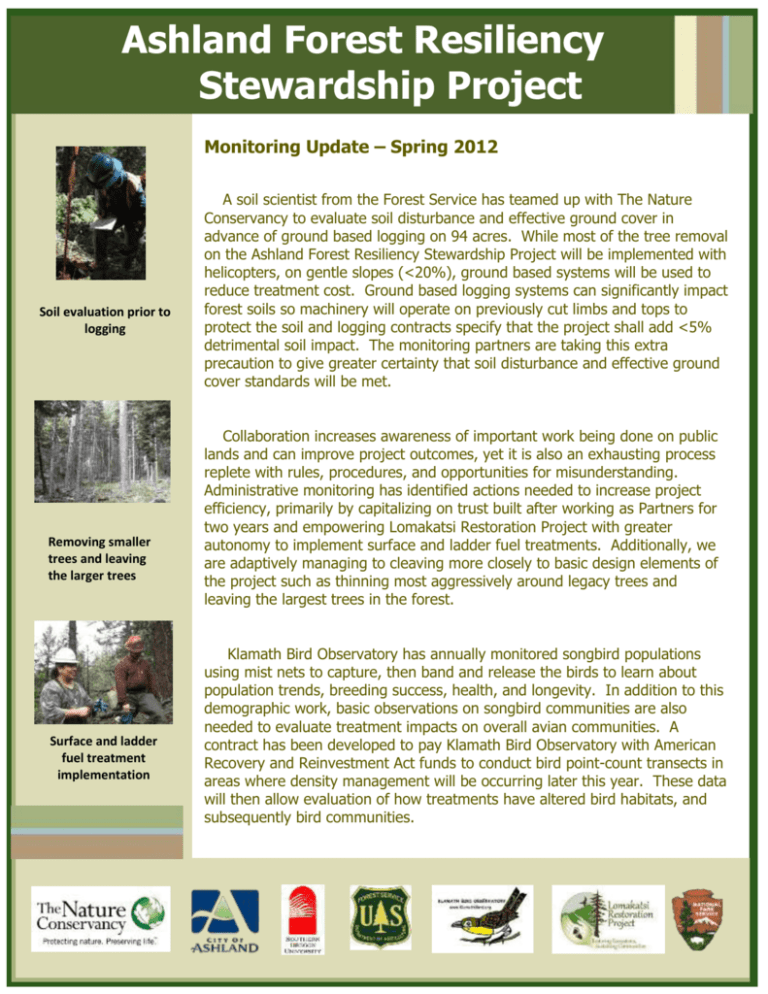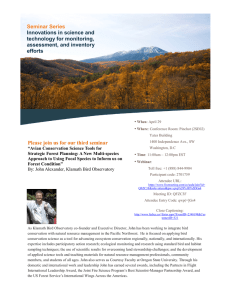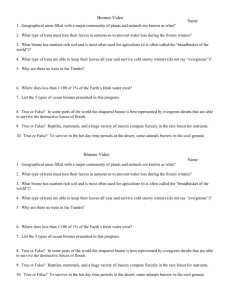Ashland Forest Resiliency Stewardship Project Monitoring Update
advertisement

Ashland Forest Resiliency Stewardship Project Monitoring Update – Spring 2012 Soil evaluation prior to logging Removing smaller trees and leaving the larger trees Surface and ladder fuel treatment implementation A soil scientist from the Forest Service has teamed up with The Nature Conservancy to evaluate soil disturbance and effective ground cover in advance of ground based logging on 94 acres. While most of the tree removal on the Ashland Forest Resiliency Stewardship Project will be implemented with helicopters, on gentle slopes (<20%), ground based systems will be used to reduce treatment cost. Ground based logging systems can significantly impact forest soils so machinery will operate on previously cut limbs and tops to protect the soil and logging contracts specify that the project shall add <5% detrimental soil impact. The monitoring partners are taking this extra precaution to give greater certainty that soil disturbance and effective ground cover standards will be met. Collaboration increases awareness of important work being done on public lands and can improve project outcomes, yet it is also an exhausting process replete with rules, procedures, and opportunities for misunderstanding. Administrative monitoring has identified actions needed to increase project efficiency, primarily by capitalizing on trust built after working as Partners for two years and empowering Lomakatsi Restoration Project with greater autonomy to implement surface and ladder fuel treatments. Additionally, we are adaptively managing to cleaving more closely to basic design elements of the project such as thinning most aggressively around legacy trees and leaving the largest trees in the forest. Klamath Bird Observatory has annually monitored songbird populations using mist nets to capture, then band and release the birds to learn about population trends, breeding success, health, and longevity. In addition to this demographic work, basic observations on songbird communities are also needed to evaluate treatment impacts on overall avian communities. A contract has been developed to pay Klamath Bird Observatory with American Recovery and Reinvestment Act funds to conduct bird point-count transects in areas where density management will be occurring later this year. These data will then allow evaluation of how treatments have altered bird habitats, and subsequently bird communities.











